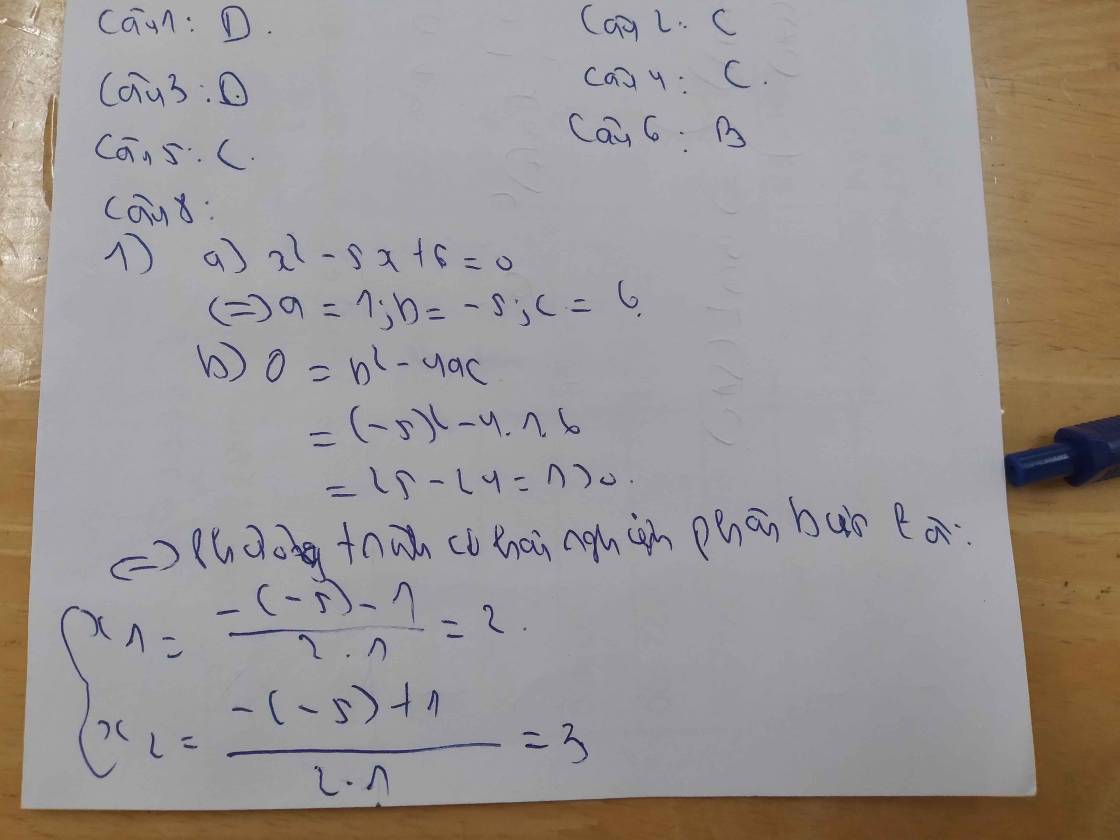Các cao nhân giúp mình bài này với mình cảm ơn🥰🥰🥰
Hãy nhập câu hỏi của bạn vào đây, nếu là tài khoản VIP, bạn sẽ được ưu tiên trả lời.




a)
\(=\left(\dfrac{x}{x+3}-\dfrac{x^2+9}{\left(x-3\right)\left(x+3\right)}\right):\left(\dfrac{3x+1}{x\left(x-3\right)}-\dfrac{1}{x}\right)\)
\(=\left(\dfrac{x\left(x-3\right)}{\left(x+3\right)\left(x-3\right)}-\dfrac{x^2+9}{\left(x-3\right)\left(x+3\right)}\right):\left(\dfrac{3x+1}{x\left(x-3\right)}-\dfrac{x-3}{x\left(x-3\right)}\right)\)
\(=\left(\dfrac{x^2-3x-x^2-9}{\left(x+3\right)\left(x-3\right)}\right):\left(\dfrac{3x+1-x+3}{x\left(x-3\right)}\right)\)
\(=\dfrac{-3\left(x+3\right)}{\left(x+3\right)\left(x-3\right)}:\dfrac{2x+4}{x\left(x-3\right)}\)
\(=\dfrac{-3}{\left(x-3\right)}\cdot\dfrac{x\left(x-3\right)}{2x+4}\\ =\dfrac{-3x}{2x+4}\)
b)
với `x=-1/2` (tmđk) ta có
\(\dfrac{-3\cdot\left(\dfrac{-1}{2}\right)}{2\cdot\left(-\dfrac{1}{2}\right)+4}=\dfrac{1}{2}\)
c)
để P=x thì
\(\dfrac{-3x}{2x+4}=x\)
\(=>-3x=\left(2x+4\right)\cdot x\)
\(-3x=2x^2+4x\)
\(2x^2+4x+3x=0\)
\(2x^2+7x=0\)
\(x\left(2x+7\right)=0\)
\(=>\left[{}\begin{matrix}x=0\\2x+7=0\end{matrix}\right.=>\left[{}\begin{matrix}x=0\left(loại\right)\\x=-\dfrac{7}{2}\left(tm\right)\end{matrix}\right.\)
d)
mik ko bt lm=)

1 older
2 the biggest
3 more expensive
4 better
5 more beautiful
6 the best
7 narrower - cleaner
8 smaller


Viết lại bài với chính xác tương đối (không mắc lỗi nghiệm trọng)
My best friend is Thanh An. We came to the same Archimedes School, and we have been friends for 1 year. Thanh An is not short and not tall, he has a normal height. He had a short black hair and a big black eyes. He is very kind and smart, especially in Math. He is funny too, he makes me laugh even when I feel bad. I like to be friends with him. Because he is very smart at Math, we created a Zalo group to do our homework. I will tell you my secret: I sometimes copy his Math homework too (HAHAHA). I hope that I can be friends with him forever.

tham khảo
Việc phát hiện ra kim loại để làm công cụ lao động có ý nghĩa hết sức to lớn. Trước kia con người chỉ biết sử dụng đá để làm công cụ. Cho tới khoảng 4000 năm TCN, con người đã phát hiện ra đồng kim loại. Đồng kim loại rất mềm, nên chủ yếu dùng làm đồ trang sức. Sau đó họ biết pha đồng với thiếc và chì cho đồng cứng hơn, gọi là đồng thau. Từ đó, người ta đã đúc ra được các loại rìu, cuốc, thương giáo, lao, mũi tên, trống đồng,v.v...[7]. Khoảng 3000 năm trước đây, cư dân ở Tây Á và Nam Âu là những người đầu tiên biết đúc và dùng đồ sắt để làm lưỡi cày, cuốc, liềm, kiếm, dao găm, v.v...
Nhờ có công cụ kim khí, con người có thể khai phá thêm đất hoang, tăng năng suất lao động, sản phẩm làm ra ngày càng nhiều, không chỉ đủ ăn mà còn dư thừa...









a) Ta có: \(\dfrac{3}{2}\sqrt{12}+\sqrt{75}-\sqrt{300}+\sqrt{27}\)
\(=3\sqrt{3}+5\sqrt{3}-10\sqrt{3}+3\sqrt{3}\)
\(=\sqrt{3}\)
b) Ta có: \(\sqrt{14-6\sqrt{5}}+\sqrt{9-4\sqrt{5}}\)
\(=3-\sqrt{5}+\sqrt{5}-2\)
=1